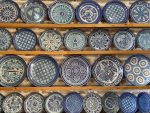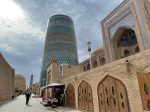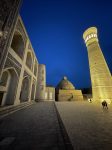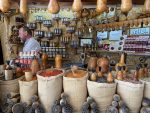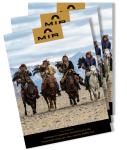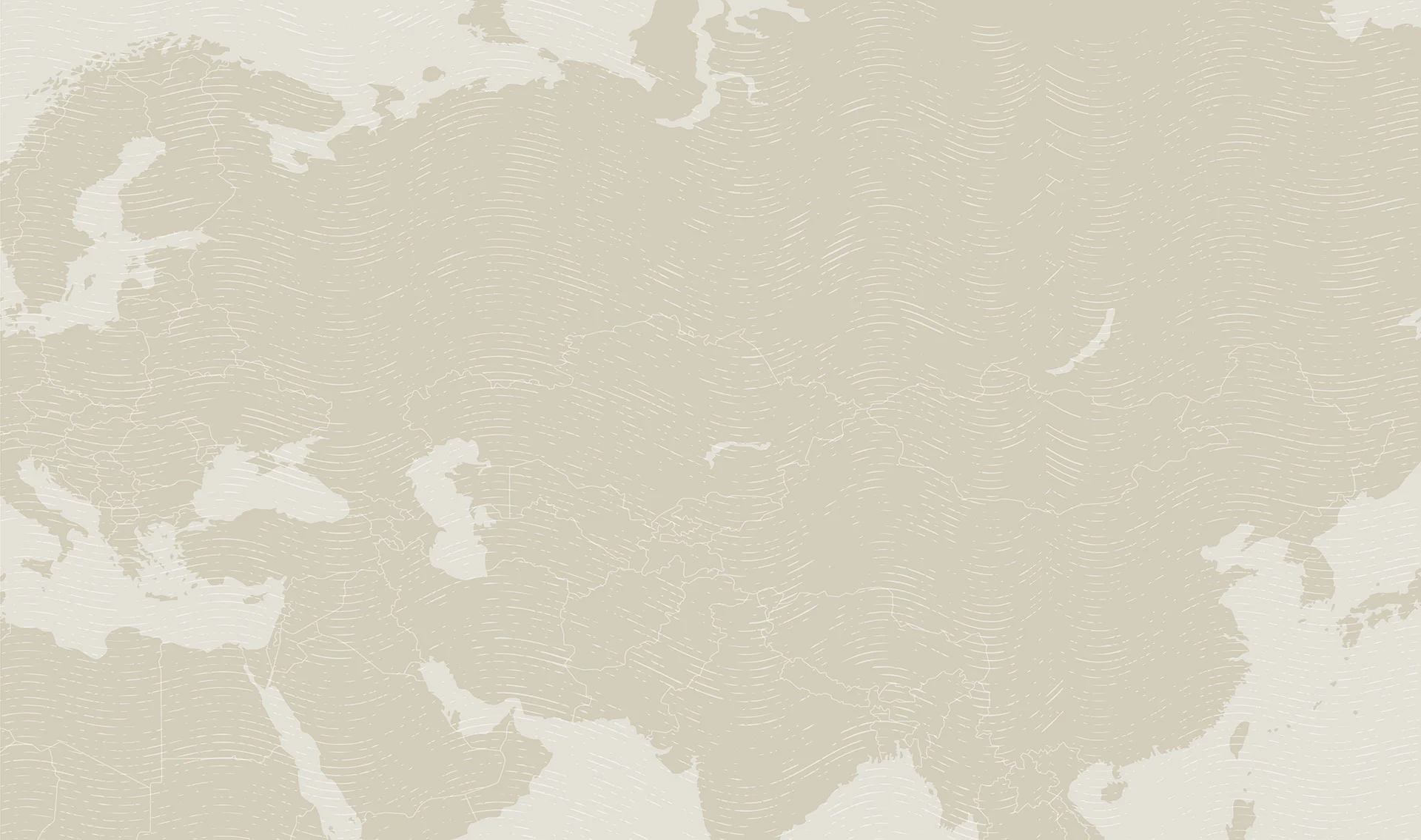Uzbekistan: Land of Silk & Spice
Photo credit: Jake Smth
A Journey to One of Uzbekistan's Greatest Festivals
Overview
Silk Road heritage runs deep in Uzbekistan, evidenced by both the country’s history and by its modern traditions. Explore this heritage in depth on this once-a-year group tour, timed to coincide with the country’s Silk & Spice Festival. Start in the capital, Tashkent, where the new town contrasts sharply with the old. Then head northwest by plane to Khiva, an architectural gem and the most remote of Uzbekistan’s oasis cities. The ancient Samanid capital of Bukhara is next, separated from Khiva by the vast emptiness of the Kyzyl Kum Desert. The festival is held in Bukhara each year. Stroll Bukhara’s picturesque alleys and streets, chat with artisans, and join in the dancing as the festival’s parade winds past domed markets and turquoise and indigo-tiled madrassas. And of course, you can shop for the many spices, silks, and other handicrafts on offer. Take the fast train east to the Timurid stronghold of Samarkand, home to Uzbekistan’s most monumental architecture and a major center for handicraft production in the country. Return to Tashkent by high-speed train, ending your journey through this ancient land of silk and spice.
Travels to: Uzbekistan

Map

Itinerary
-
Days 1-2: Tashkent (Uzbekistan)

The group tour begins in Tashkent, Uzbekistan’s capital and largest city. Wander through its main market, Chorsu Bazaar, a kaleidoscope of produce, spices, textiles, and a multitude of other goods. Tour the city’s most noteworthy sights including Independence Square, Kukeldash Madrassah, and the Museum of Applied Arts. Culinary highlights are lunches at two of Tashkent’s most renowned restaurants and an introduction to Uzbek cuisine, complete with cooking demonstrations, from one of the city’s top chefs.
HIGHLIGHTS
- Non, the fluffy bread that’s a staple of Uzbek cuisine, sold in abundance at Chorsu Bazaar
- Park-like Independence Square, formerly Lenin Square, rechristened and adorned with a new monument following Uzbekistan’s 1991 proclamation of independence
- Tashkent’s monumental 16th-century Islamic architecture, including Kukeldash Madrassah, Kaffal-Shashi Mausoleum, and Barak-Khan Madrassah
- The Museum of Applied Arts, housed in a gorgeous 19th-century mansion
- An introduction to Uzbek cuisine from a renowned Tashkent chef
-
Days 3-4: Khiva, Kyzyl Kum Desert

Fly to Urgench and continue overland to nearby Khiva, an ancient city imbued with the spirit and energy of the Silk Road. Wander through the winding alleys of the UNESCO-listed Old Town, filled with minarets, cobbled alleys, mosques, and the beautifully preserved Kunya Ark, the original residence of the ruling khans. Upon leaving town, trace the path of Silk Road camel caravans through the red sands of the Kyzyl Kum Desert en route to Bukhara.
HIGHLIGHTS
- Khiva’s Old Town (Ichon-Qala in Uzbek), a UNESCO World Heritage Site
- Tash-Hauli Palace, built in the 19th century for the khan and his four wives
- Dzhuma Mosque, famous for its carved wooden pillars
- Kunya Ark, the original residence of the khans
- Tracing the Silk Road’s path across the Kyzyl Kum Desert
-
Days 5-6: Bukhara

Arrive in Bukhara, Central Asia’s most ancient living city. Its UNESCO-listed Old Town encompasses more than 140 protected monuments, including the Lyabi-Hauz Plaza at the heart of the city and the Ark Citadel, the original fortress of Bukhara. Spend two full days interspersing these historical sites with the city’s annual Silk & Spice Festival.
HIGHLIGHTS
- Old Bukhara’s ancient mosques, minarets, madrassahs, and its central Lyab-i-Hauz Plaza, adorned with a reflecting pool
- Ark Citadel, Bukhara’s giant ancient fortress
- The Silk & Spice festival parade, with traditional music and costumes all around
- Browsing ageless domed bazaars filled with artisans selling textiles and other handicrafts from around Uzbekistan
- Fragrant and colorful piles of spices and teas
-
Days 7-10: Samarkand, Tashkent

Experience the glory of fabled Samarkand – the conqueror Tamerlane’s ancient capital – with visits to the massive Bibi Khanum Mosque, Ulug Bek’s incredible observatory, and majestic Registan Square. Meet with a master embroider at his workshop, stroll through the colorful stands brimming with fresh produce and spices at the Siab Bazaar, and visit a village where silkworms are raised and their cocoons processed into silk. Then head back to Tashkent by high-speed train.
HIGHLIGHTS
- UNESCO-listed Samarkand’s Registan Square, bordered by three beautiful madrassahs
- The 14th-century conqueror Tamerlane’s architectural legacy in Samarkand, including Bibi Khanum Mosque, the largest of its day, and the Ulug Bek Observatory
- The lively Siab Bazaar, lined with the brilliant produce and spices that once tempted Silk Route traders
- A suzani or needlepoint embroiderer’s workshop and learning all about this traditional handicraft
- Experiencing firsthand the process of raising silkworms and processing their cocoons to make the elegant fabrics for which Uzbekistan is famous
Dates & Prices
Small group tour – max 16 travelers
Land tour price, per person. Based on double occupancy and minimum group size of 4 travelers.
Call for dates and prices
What's Included
-
Tour Includes
- Accommodations, as noted in the itinerary.
- Meals per the itinerary – 10 breakfasts, 7 lunches, and 8 dinners.
- Arrival/departure airport transfers on the tour start/end date. MIR will arrange for all travelers to be met upon arrival and seen off upon departure whether or not we make your flight arrangements.
- Ground transportation throughout tour by private van or coach. (Type of vehicle depends on group size.)
- Train tickets from Bukhara to Samarkand and Samarkand to Tashkent, seated class.
- Guided sightseeing tours and entrance fees, as outlined in the itinerary.
- Special events, excursions, and cultural performances, as outlined in the itinerary.
- Services of experienced, English-speaking local guides, drivers, and other staff, including a MIR Tour Manager.
- Gratuities to local guides, drivers, and other service personnel, including servers at group meals.
- A daily supply of bottled water.
- Baggage handling, where available.
- Complete pre-departure electronic document that includes detailed packing suggestions, reading list links, country-specific information, maps, travel tips and more.
- Assistance booking your custom flight arrangements, on request. (Please note, international airfare is not included in the land tour cost.)
- Customized visa information and instructions. (Please note, visa fees are not included in the tour price.)
- Electronic final update bulletin, with any late news, updates and important information.
-
Not Included
- International airfare and taxes/fuel surcharges.
- Internal airfare. (Internal airfare is quoted separately and subject to change by airlines.)
- Meals and drinks not specified as included in the itinerary.
- Single supplement (or partial single supplement where applicable), if requested or required.
- Items of a personal nature such as phone calls, email, laundry, and alcohol.
- Gratuities to Tour Manager.
- Visa and/or passport fees, excess-baggage charges, airport departure taxes, vaccination and other medical costs.
- Expenses incurred as a result of delay, modification, or extension of a tour due to causes beyond MIR’s control.
- Travel insurance, including cancellation, medical, and evacuation insurance.
- Optional pre or post-tour extensions.
Activity Level
-
Level 3: Medium
Level 3: Medium
This small group tour features long days walking and standing while touring, some long segments of overland travel, uneven surfaces and steps, absent handrails, some stair-climbing, and absence of elevators. Only those fit to travel, who are willing to accept local standards of amenities and services, and physical challenges of the program, should consider joining.
Travelers must be able to walk at least two miles a day, keeping up with fellow travelers. There are overall shortcomings in the tourism infrastructure, including some that can cause walking challenges such as unpaved sidewalks, uneven surfaces and steps, packed-dirt streets, broken pavement (streets or sidewalks), and a general absence of handrails or ramps. Some attractions are only accessible via steep staircases with tall uneven steps – additionally, these may be spiral staircases or in narrow passages with limited light. Elevators are not available at touring sites, nor at a few of the hotels.
Past travelers have also encountered challenges with plumbing, bureaucratic service, variety of locally available foods, and availability and quality of public restrooms.
Accommodations vary from superior tourist class hotels to small, intimate properties.
